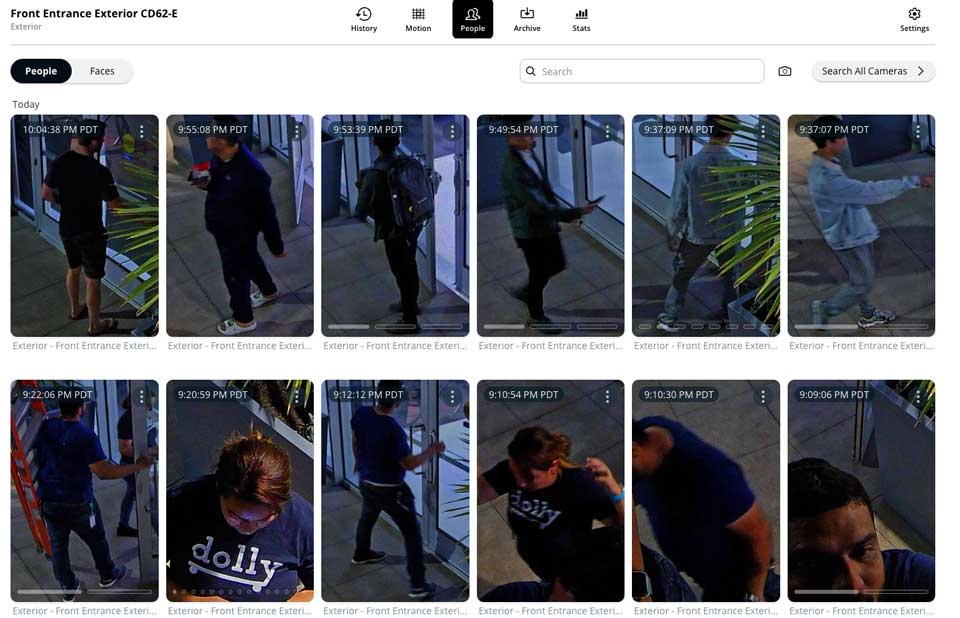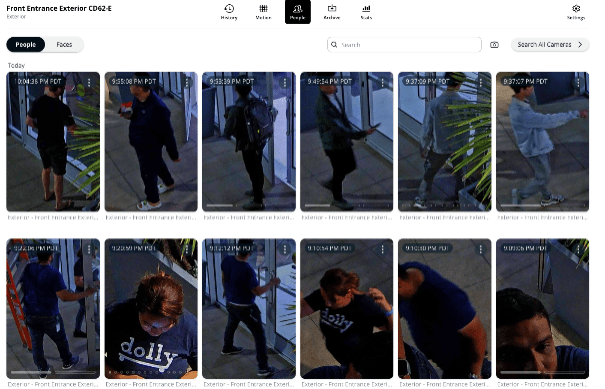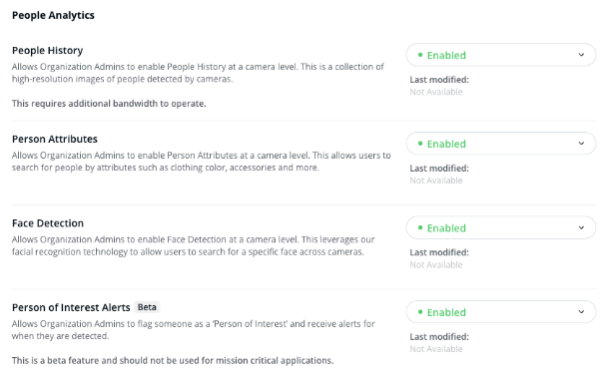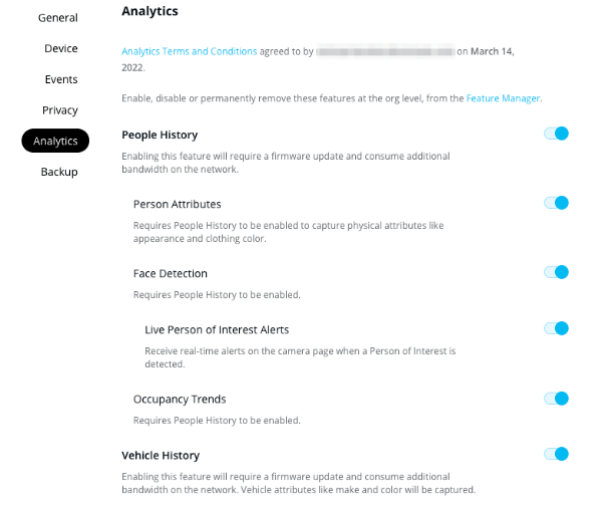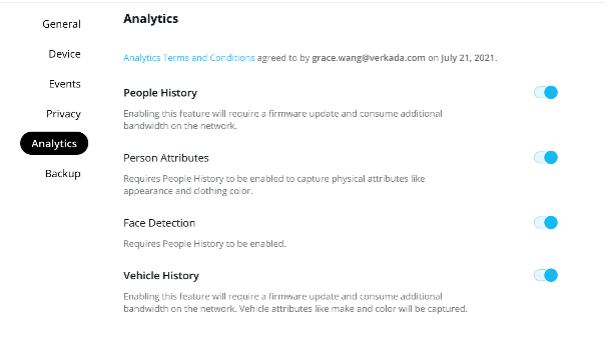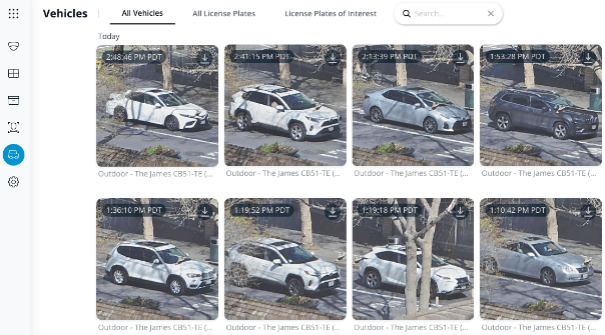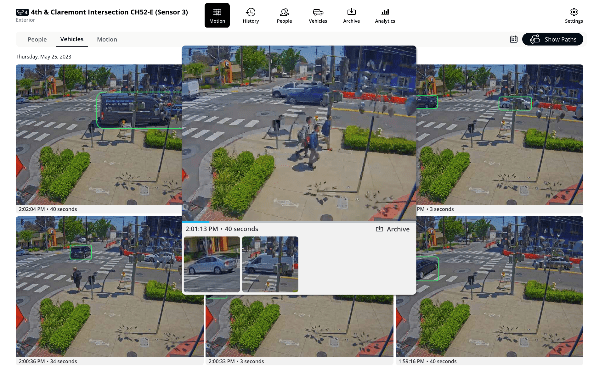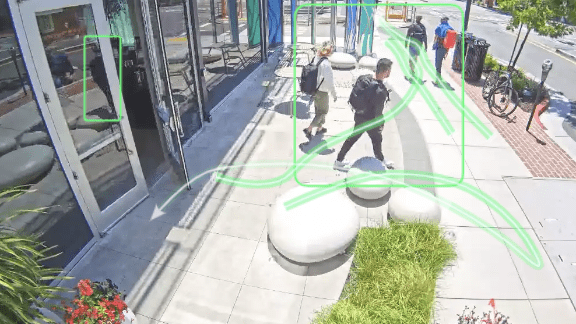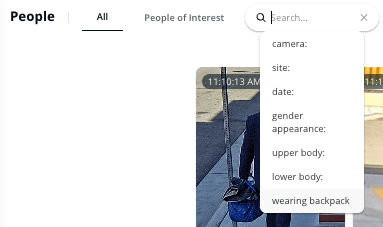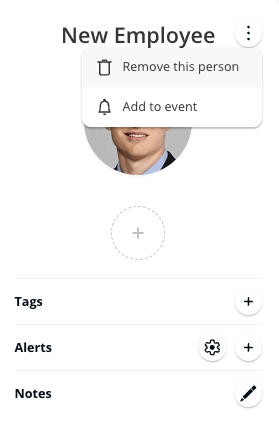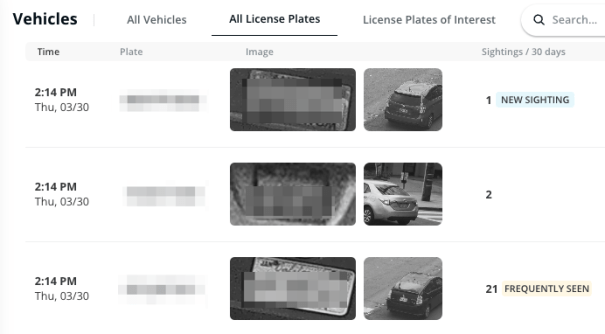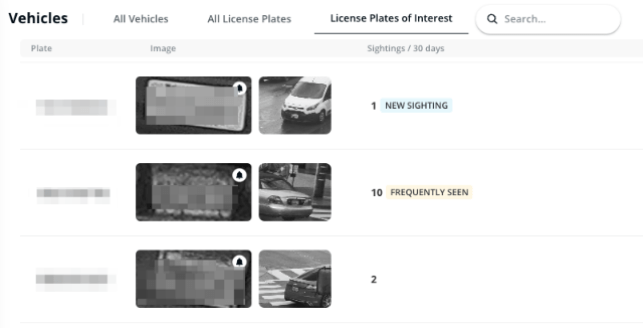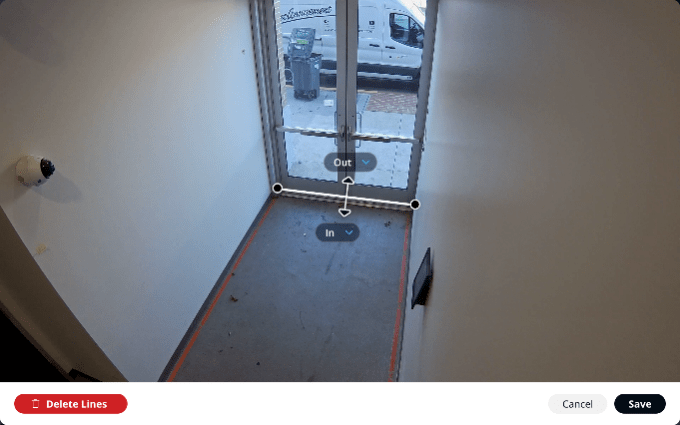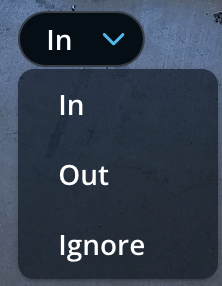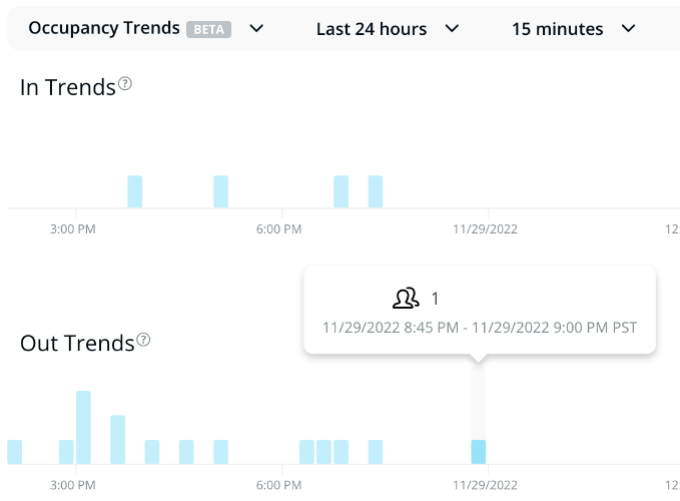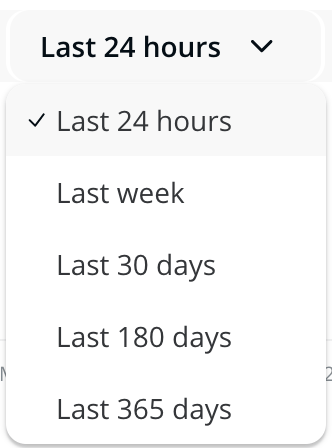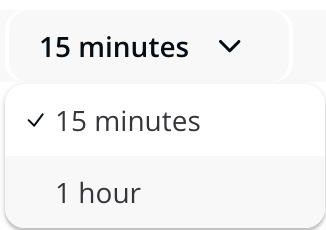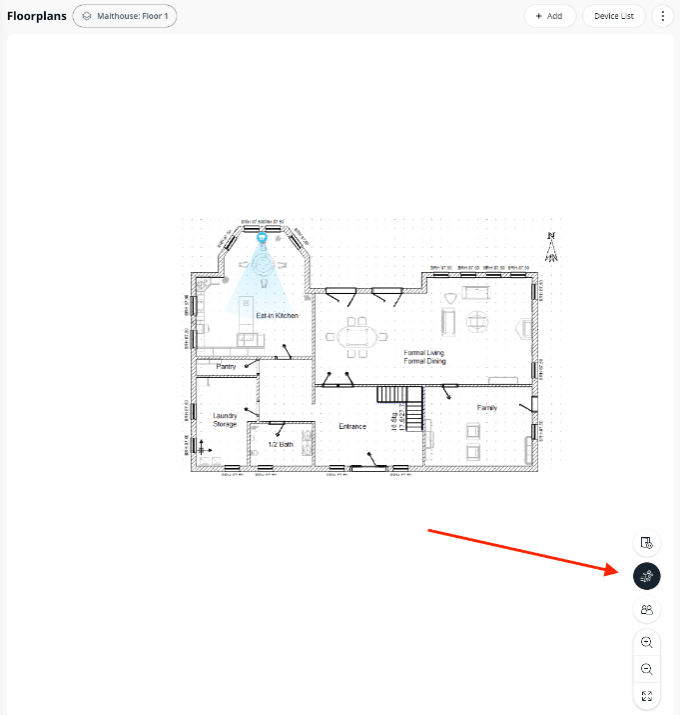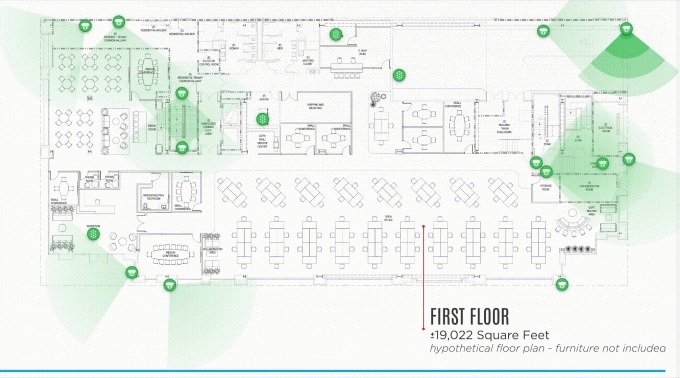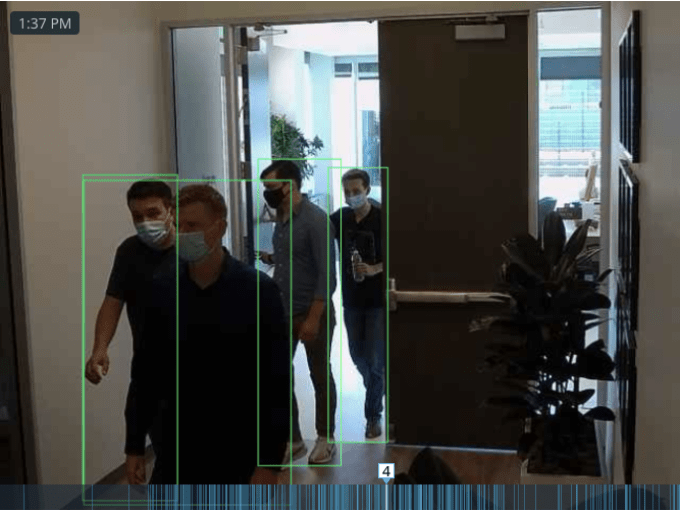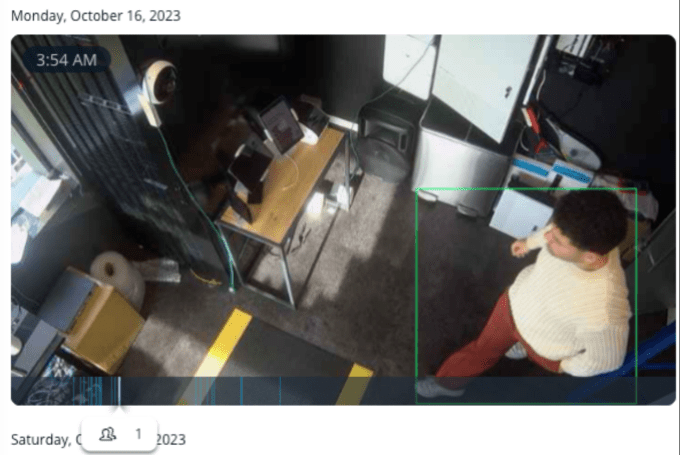IP Camera Analytics and Detection Setup Guide v1, IP camera analytics and detection refers to the use of software and algorithms to analyze the video footage captured by IP cameras. This goes beyond just recording what happens. It allows the camera to identify and interpret specific events within the video.
Here’s a breakdown of the concept:
There are different levels of sophistication in IP camera analytics and detection. Here are some examples:
IP camera analytics and detection can be a valuable tool for security and surveillance applications. It can help to reduce false alarms, improve efficiency, and provide more actionable insights from video footage.
People Analytics
People Analytics
Learn how to use Verkada People Analytics to filter people by specific attributes
Updated over a week ago
The Verkada People Analytics feature uses powerful edge-based camera capabilities to detect people, faces, and filter results based on clothing color, apparent sex, and the presence of backpacks.
Note: See User Guide for People Analytics for best practice guidelines.
Enable the People History feature
All Verkada cameras perform people detection (as outlined above) out of the box. However, to enable more complex analytics, such as the ability to search for faces or for people by clothing color, you must enable the People History feature.
Required. To begin, you need to enable the feature globally on your org and then on the individual cameras.
Enable People Analytics Globally
Enable People Analytics on individual cameras
View Person History
When enabled, a Person History can be seen on individual cameras and across all cameras in your organization.
IP Camera Analytics and Detection Setup Guide v1
View Person History for an individual camera
View Person History across all cameras
You should be able to see all detected people across all cameras.
Use Face Search
When enabled, a Face Search can be seen across all cameras in your organization and on the Verkada Command mobile app.
Use Face Search across all cameras
The Face Search feature is enabled, by default, when you toggle on High Resolution Image Capture. You can search a face across all cameras in your organization.
You should be able to see all detected faces across all cameras.
Use Face Search on the Command mobile app
See Face Search on Mobile Apps to perform a face search on the Command mobile app.
Bulk enable People History on the Devices page
People and Face Search on Mobile Apps
People and Face Search on Mobile Apps
Learn how to use people and faces on Verkada mobile apps
Updated over a week ago
Access People History search
Access a Face Search
License Plate Recognition Overview & FAQ
License Plate Recognition Overview & FAQ
Learn the License Plate Recognition functionality and use cases
Updated over a week ago
Specially-placed cameras are designed to capture license plate images and provide users with a readable and searchable list of license plate numbers. These license plate captures can be linked to live or recorded video from a nearby camera for complete context surrounding vehicle events.
Verkada’s License Plate Recognition (LPR) allows real-time license plate monitoring and logging for later reference. Learn how to configure LPR for your cameras.
Notes:
Key features
Investigate License Plates of Interest
You can use LPR to quickly search for all historical appearances of a license plate, making it easier to complete investigations for suspect vehicles.
Receive License Plates of Interest alerts
With Verkada’s LPR solution, you can receive License Plate of Interest alerts when a specific license plate is detected at any of your locations. You can also send these notifications to third-party applications through the Verkada Webhooks API.
Export results via API integrations
Verkada’s LPR results can be systematically exported to third party systems leveraging our API integrations. This allows customers to run custom business reports or integrate with other critical parts of their security infrastructure.
FAQ
Will Gen 1 Bullet cameras provide the same level of LPR performance as the current, Gen 2 models?
Is it possible to use cameras in LPR mode for video security beyond LPR mode?
Is it necessary to use a Bullet camera as the context camera in a dual-camera LPR setup?
What is the function of a context camera and when is it necessary to use one?
When is it necessary to use an external IR illuminator for capturing license plates and what model should I choose?
What is the camera’s behavior in the event of an internet outage?
Is it possible to integrate a Verkada LPR camera into an external system, such as a tolling system?
What types of license plates are incompatible with Verkada’s LPR technology?
Why is my camera feed too dark at night?
Enable Vehicle Analytics
Vehicle analytics uses powerful edge-based capabilities to detect vehicles and filter results based on vehicle color and body type.
How it Works
Vehicle analytics leverages the cameras’ powerful onboard processing capabilities to detect the presence of, and analyze the properties of vehicles as they appear in the frame. As vehicles are detected, high-resolution images are taken and analyzed for vehicle objects. Selected images are then sent to Verkada’s cloud-based Command platform, where users can filter historical clips for vehicles and search for specific vehicles by time, date, body type, and color.
All Verkada cameras perform vehicle detection (as outlined above) out of the box. However, to enable more complex analytics, such as the ability to search for vehicles by color and body type, vehicle analytics must be turned on.
Bulk enable People History from the Devices Page
Vehicle analytics for an individual camera
Vehicle analytics across all cameras
People and Vehicle Motion Search
People and Vehicle Motion Search
Learn now to search paths of people and vehicles with advanced motion search
Updated yesterday
Verkada’s people and vehicle search features use advanced computer vision functionality to identify people and vehicles within the camera’s field of view and quickly find relevant events.
The Verkada Command UI enables instant video replay previews and trajectory viewing. Trajectory analysis features offers possibilities for searching events, reduces the number of missed detections, improves the detection distance, and reduces duplicates.
View people and vehicles over a timeline
Required. You must have Site Viewer and Site Admin access to view the Motion tab under the camera feed. Learn more about Roles and Permissions for Cameras.
You can view people and vehicles detected by a Verkada camera within historical footage.
View people trajectories (paths)
The people trajectories feature visualizes the paths of people moving through the scene to show the trajectories of each detected person.
Trajectories drastically improve the motion event recall and enable the cameras to recognize people and vehicles at a further distance. For a detailed breakdown of the detection ranges of each model, see the People Analytics Guide.
Compatible cameras
The following table outlines which camera models support Motion Events, which models support Motion Trajectories, and where the motion model is running. Newer camera models have the capability to run the motion detection model on the camera, whereas D-series cameras still rely on the Verkada Cloud to run the model.
People and Vehicle History Search
People and Vehicle History Search
Learn how to use the Search page to view all people and vehicles in your organization
Updated over a week ago
You can use the People and Vehicle search pages to:
Search for people
You should see all the people sighted on cameras in your org.
Each thumbnail image includes a timestamp and the camera name.
See also how to search for people using our mobile apps.
Search for People of Interest
Set People of Interest notifications
To receive alerts for People of Interest, you need to set up alert based on your events.
IMPORTANT
People of Interest replaced Profiles on June 8, 2023. Profiles created before this date that were not set as People of Interest are not automatically send People of Interest alerts.
To set up notifications when a particular face is detected:
Create People of Interest
You can manually create a People of Interest group by uploading an image of a person’s face.
If you upload a picture that resembles an existing Person of Interest, then Command may suggest a profile to add the image to. If the picture you are uploading is of an existing profile, you can select it to add this picture as a reference photo. If not, select create a new one to continue creating a new profile.
Merge People of Interest
Sometimes duplicate People of Interest are accidentally created. If this happens, you can merge the duplicate People of Interest profiles.
The profiles should merge and you will be prompted to view the new profile for that person.
Create a new tag to People of Interest
You can create and add tags to People of Interest to group similar profiles together.
Type the desired name and at the bottom of the tag list, click Add Tags.
Add a tag to a user’s profile
Select the profile and select the plus (+) icon (adjacent to the Tags button). If the tag you want to add is already in the list, you can select it from the list.
Filter a tag name
Remove a person of interest
To learn more about how individual faces are identified, see People Analytics.
.
Search for vehicles
You should see all vehicles sighted on cameras in your org.
Search all license plates
If you have Verkada License Plate Recognition (LPR) cameras installed, you can use the All License Plates and License Plates of Interest tabs.
Enable Occupancy Trends
The Occupancy Trends feature provides organizations with an estimate of the foot traffic at critical locations within their facilities. These estimates can provide valuable insights for optimizing staffing, adjusting hours of operation, and or tracking the
performance of marketing and promotional activities.
Note: This feature is available on the CB52, CB62, CM42, CD32, CD42, CD52, and CD62 models.
Installation guidelines
Required. To use this feature, People Analytics must be enabled. To do so, follow the steps in the People Analytics guide.
For best performance, we recommend these installation guidelines during the installation of a camera where Occupancy Trends will be enabled:
View Occupancy Trend estimates
Export Occupancy Trends results
You can export Occupancy Trends results as a .csv file.
View Live Motion on Floor Plans
View Live Motion on Floor Plans
Learn how you can view live motion on your floor plan in real-time
Updated over a week ago
Verkada’s motion display feature offers two ways to see live motion on your site’s floor plans in real-time.
Set up motion detection
With motion detection, the camera’s field of view pulses when motion is seen. This happens in real-time.
Example: Selected Floor Plan
Detect People Count
Detect People Count
Learn how to detect the number of people in your camera frame
Updated over a week ago
When you scrub through a Verkada camera’s historical video clips:
.
